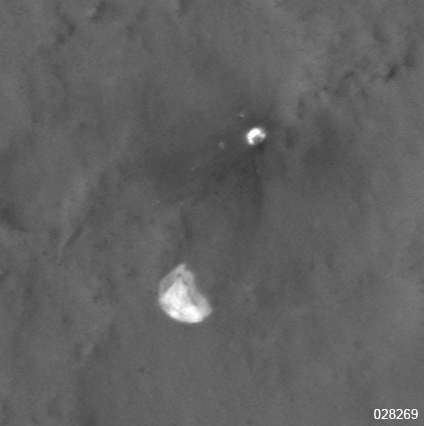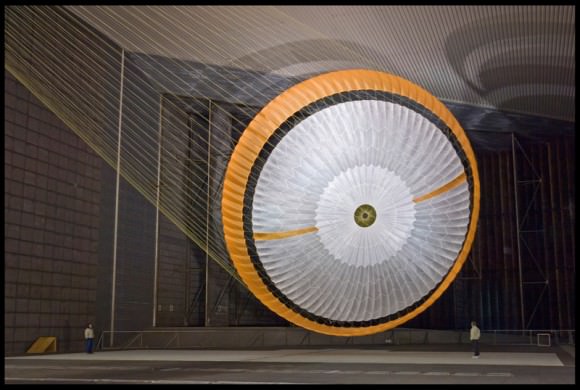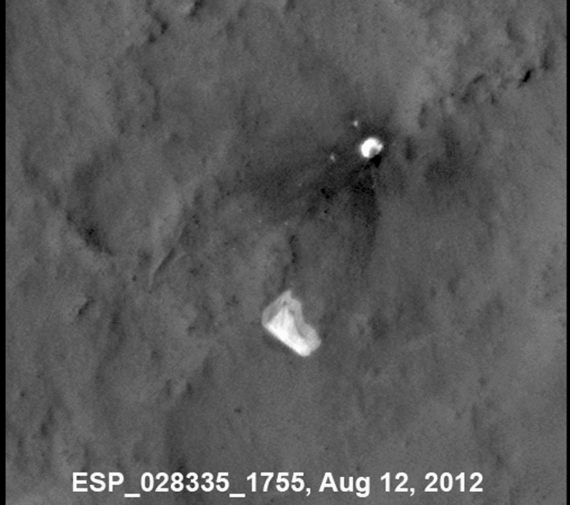How cool is this? An animation of seven images from the HiRISE camera on the Mars Reconnaissance Orbiter show a “flapping” of the parachute that allowed the Curiosity rover to descend safely through Mars atmosphere images. The chute, imaged as it lay on the ground following the rover’s safe landing, was blown about by the Martian breeze! The images were acquired by HiRISE between August 12, 2012 and January 13, 2013. The different images show distinct changes in the parachute, which is attached to the backshell that encompassed the rover during launch, flight and descent.
The HiRISE team explains the animation:
In the first four images there are only subtle changes, perhaps explained by differences in viewing and illumination geometry.
Sometime between September 8, 2012 and November 30, 2012, there was a major change in which the parachute extension to the southeast (lower right) was moved inward, so the parachute covers a smaller area. In the same time interval some of the dark ejecta around the backshell brightened, perhaps from deposition of airborne dust.
Another change happened between December 16, 2012 and January 13, 2013, when the parachute shifted a bit to the southeast. This type of motion may kick off dust and keep parachutes on the surface bright, to help explain why the parachute from Viking 1 (landed in 1976) remains detectable.
Here’s another version from UnmannedSpaceflight.com’s Doug Ellison:

And here’s a look at how big the chute really is (note the people for scale):

Source: HiRISE


That is VERY cool! And a BONUS for Mars atmospheric sciences!
A Dust Devil passes by, inflates the chute then lofts the re-entry cowling in the cyclonic column to 15,000 feet… Off to OZ!
Very dramatic evidence.
Very impressive.